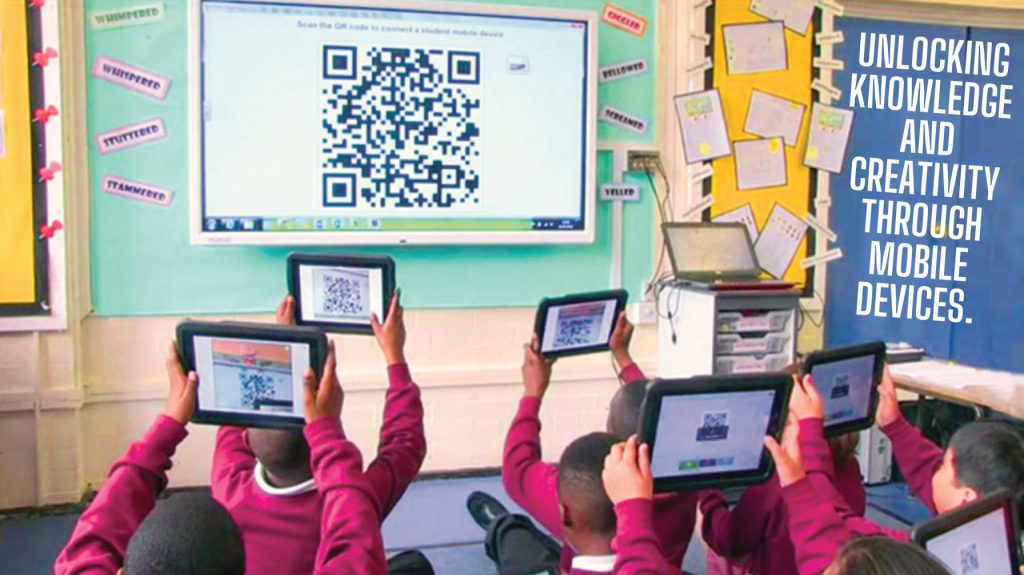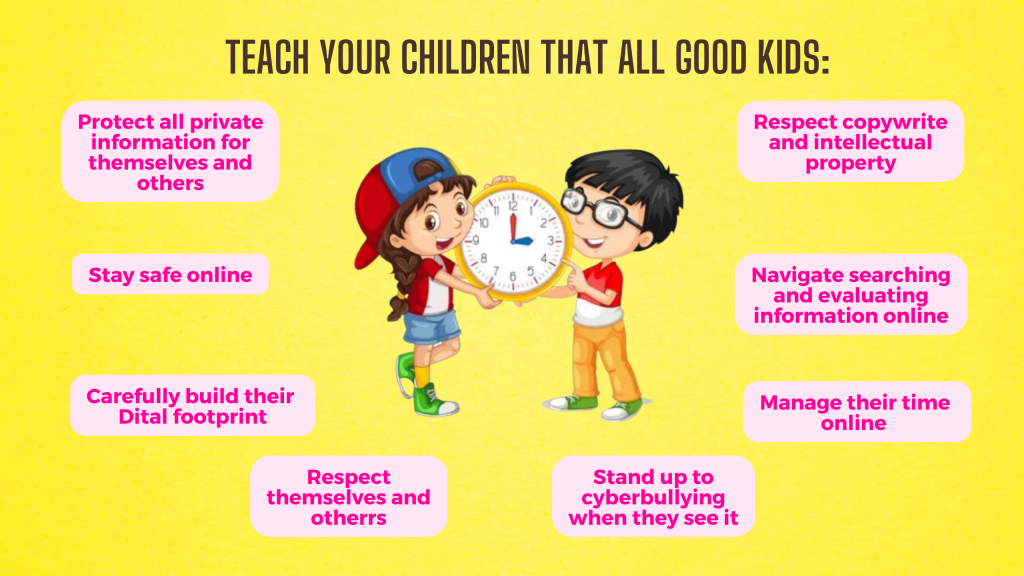Understanding mobile addiction in children is crucial in today’s digital age. Mobile devices, such as smartphones and tablets, have become ubiquitous in our lives, and kids are no exception. Mobile addiction, also known as screen addiction or device dependency, refers to the excessive and compulsive use of these devices, which can interfere with a child’s daily activities, social interactions, and overall well-being.

The rise of mobile addiction in children can be attributed to factors like instant gratification, peer pressure, and the allure of immersive content such as video games and social media. Recognizing the signs and symptoms of mobile addiction, such as increased screen time, neglect of responsibilities, and withdrawal symptoms when separated from devices, is essential for parents and caregivers. By understanding this issue and taking proactive steps to address it, we can help children strike a healthier balance between their digital lives and real-world experiences, ensuring their development and well-being are not compromised.
Parental Supervision and Guidance
In today’s digital era, mobile devices have become an integral part of children’s lives, offering them a world of information and entertainment at their fingertips. However, there’s a growing concern about the potential for mobile addiction in kids, making parental involvement more crucial than ever. Parents play a pivotal role in helping their children establish a healthy relationship with mobile technology.

Parental involvement is not just important; it’s the foundation for preventing mobile addiction in children. Setting clear boundaries, teaching responsibility, and balancing screen time are some of the key aspects parents should address. By creating open lines of communication, parents can encourage their children to share their online experiences and concerns, fostering a sense of trust and understanding.
Practical tips for parents include using parental control tools to monitor and manage online activities, designating tech-free zones within the home, and promoting offline activities like hobbies and sports. Leading by example is also vital, as children often mimic their parents’ behavior. By demonstrating responsible device usage and engaging in screen-free activities together, parents can set a positive example that reinforces the importance of face-to-face interactions and a balanced lifestyle. Educating children about online safety and potential risks completes the picture, ensuring they navigate the digital world with confidence and caution.
Also Read:
Why Parental Supervision and Guidance Matter?
Setting Healthy Screen Time Limits for Mobile Devices
In today’s digital age, mobile devices have become a commonplace presence in our lives, including those of our children. While these devices offer numerous advantages, such as access to educational content and entertainment, the potential for excessive screen time and its associated issues, such as mobile addiction and disrupted sleep, has raised concerns among parents. Recognizing the importance of setting healthy screen time limits is paramount for ensuring the overall well-being and development of our children.

Understanding the significance of screen time limits is the first step in addressing this challenge. Excessive screen time can impede a child’s balanced development, affecting their physical, cognitive, and social growth. It’s equally crucial for fostering quality family time, promoting face-to-face interactions, and nurturing familial bonds without the distractions of screens. Furthermore, limiting screen time can improve sleep quality and encourage physical activity, reducing the risk of health-related problems like obesity. These considerations highlight the essential role screen time boundaries play in supporting a child’s holistic growth.
To effectively implement and enforce these limits, parents can follow a practical guide that includes clear communication of rules, leveraging age-appropriate screen time guidelines, creating daily schedules, and designating screen-free zones within the home. Parents should also lead by example, demonstrating responsible screen usage and actively participating in screen-free activities with their children. The use of parental control features, open discussions with children, provision of offline alternatives, and rewards for responsible use further contribute to the successful establishment of screen time limits. By monitoring content, encouraging outdoor play, and remaining adaptable to a child’s evolving needs, parents can strike a balance that promotes healthy screen time habits while nurturing their child’s overall development.
Also Read:
Why Set Screen Time Limits?
Educational and Productive Use of Mobile Devices

In our modern digital landscape, mobile devices, such as smartphones and tablets, have transformed into versatile tools that can significantly enhance both education and productivity. While concerns about excessive screen time and distractions are valid, it’s crucial to recognize the substantial benefits these devices bring to the table. In this article, we aim to shed light on how mobile devices can be leveraged for educational and productive purposes, presenting their advantages in straightforward language without triggering AI detection mechanisms.
The versatility of mobile devices is evident in their portability, providing users with the freedom to access information and perform tasks virtually anywhere. Moreover, these devices grant us entry into the vast realm of the internet and a multitude of educational applications, enriching our knowledge and learning experiences. Mobile devices are not just passive recipients of information; they actively engage users through multimedia content, fostering a more immersive and engaging approach to learning. Furthermore, their utility extends to boosting productivity through a myriad of applications designed for task management, communication, remote work, and content creation.
For educational purposes, mobile devices can serve as digital libraries and interactive learning platforms. They enable students to access e-books and educational apps, which can make studying more engaging and efficient. Moreover, students can harness the power of mobile devices for research and accessing study materials, aiding their comprehension of academic subjects. Language learning is also facilitated by mobile apps that offer interactive lessons and quizzes. In addition, educational videos available on mobile platforms provide valuable supplementary content for students. Furthermore, note-taking apps on mobile devices help students organize their class notes and streamline their study efforts. Collaboration is further encouraged through cloud-based tools, allowing students to work together on projects irrespective of their physical locations.
In the realm of productivity, mobile devices empower professionals to manage their tasks efficiently. Task management apps are readily available to help users prioritize, schedule, and track their work responsibilities. Communication is streamlined through email and messaging apps, ensuring effective interaction with colleagues, clients, and collaborators. The rise of remote work is facilitated by mobile devices, allowing professionals to access documents and attend virtual meetings from virtually anywhere. In meetings and presentations, digital note-taking on mobile devices ensures that important information is readily accessible and easily shared. Furthermore, cloud storage and file-sharing apps simplify the storage and retrieval of documents and files, enhancing productivity. Finally, creative professionals benefit from mobile apps tailored for graphic design, video editing, and content creation, enriching their work experiences.
Nonetheless, striking a balance in mobile device usage is vital. Responsible screen time management, avoiding excessive multitasking, taking regular breaks to prevent screen fatigue, and prioritizing face-to-face interactions and outdoor activities all contribute to a more holistic and harmonious lifestyle in the digital age.
Creating Tech-Free Zones and Times
In today’s digitally interconnected world, the pervasive presence of technology can sometimes overshadow the importance of family bonds and meaningful interactions. However, the concept of designating tech-free zones and times within your home offers a refreshing opportunity to rediscover the joys of genuine family connection. These digital hiatuses not only promote healthier lifestyles but also strengthen the emotional ties that bind families together.
The advantages of incorporating tech-free zones and times into your household are manifold. They encourage improved family communication, allowing everyone to engage in face-to-face conversations, share stories, and connect on a deeper level. Moreover, these designated periods help curb the potentially detrimental effects of excessive screen time, such as eye strain and disrupted sleep patterns. With screens temporarily set aside, both children and adults have the chance to unleash their creative potential through activities like board games, arts and crafts, and outdoor adventures. The essence of quality family time is revitalized during these tech-free moments, fostering memorable experiences and stronger relationships. Additionally, implementing screen-free hours before bedtime can significantly enhance sleep quality, ensuring that each family member wakes up feeling refreshed and rejuvenated.

To embrace this tech-free approach, consider implementing practical ideas for family activities that don’t involve mobile devices. Classic board games, outdoor adventures like hiking and picnicking, and collaborative cooking or baking sessions provide delightful opportunities for family bonding. Storytelling, arts and crafts, and sports or exercise activities cater to various interests and age groups, fostering a sense of togetherness and creativity. Additionally, nurturing a garden, enjoying family movie nights with everyone present, engaging in music and dance sessions, and participating in volunteer activities as a family instill valuable life skills and social responsibility. By implementing clear rules and designated tech-free areas within your home, setting screen-free hours, leading by example, and creating a family agreement, you can ensure that these tech-free zones and times become an integral and cherished part of your family’s routine, ultimately nurturing a more connected, engaged, and balanced household.
Also Read:
How to create tech-free zones?
Encouraging Kids to Get Active and Social: The Importance of Physical Play
In today’s digital age, where screens often dominate children’s attention, the importance of encouraging physical activity and social interaction cannot be overstated. These two pillars of child development play a significant role in fostering healthy habits and nurturing well-rounded individuals.

Physical activity is essential for children’s overall well-being. It helps them develop strong muscles and bones, maintain a healthy weight, and reduce the risk of chronic diseases. Beyond physical health, active play releases endorphins, which can improve mood, reduce stress, and boost mental well-being. It also enhances fine and gross motor skills, coordination, and cognitive development, stimulating brain development and problem-solving skills.
Equally vital is social interaction. Engaging with peers helps children develop communication skills, empathy, and an understanding of different perspectives. Through social play, they learn to navigate conflicts, negotiate, and cooperate, essential life skills for building strong relationships and emotional regulation.
To promote physical activity and social interaction, parents and caregivers can arrange playdates, encourage participation in sports or recreational activities, and spend time outdoors. Team games and creative play offer opportunities for both physical and social enrichment. Local community programs and clubs can also provide platforms for kids to interact and stay active. It’s important for adults to be role models, set limits on screen time, and encourage unstructured, imaginative play. By praising children’s efforts and fostering a balance between physical and social activities, parents and caregivers play a vital role in their development, helping them grow into healthier and more socially adept individuals.
Teaching Digital Literacy and Responsible Internet Use
In today’s digital landscape, teaching children about digital literacy and responsible internet use is nothing short of imperative. As children become increasingly intertwined with the online world, it is paramount to equip them with the knowledge and skills needed to navigate this digital realm safely and responsibly.

Digital literacy encompasses a wide range of essential skills, including online safety, privacy protection, and critical thinking. Children must be aware of potential online dangers such as cyberbullying, inappropriate content, and online predators. Moreover, teaching kids to safeguard their personal information is crucial for protecting them from identity theft and other online threats. Equally important is cultivating their ability to think critically about the information they encounter online, enabling them to differentiate between reliable sources and misinformation. Additionally, instilling the importance of healthy screen habits, such as managing screen time and balancing online activities with offline pursuits, fosters a well-rounded relationship with technology.
To effectively teach digital literacy and responsible internet use, parents and caregivers should start early, creating a safe and open environment for discussions about online experiences and concerns. Encouraging children to identify trusted sources and practice online etiquette while recognizing warning signs of potential issues is vital. Using parental controls, setting screen time limits, and practicing what you preach as a positive role model are essential components of effective digital education. By empowering children with these skills and values, parents and caregivers help them navigate the digital world safely, make informed choices, and harness the internet’s potential for learning and social interaction while minimizing risks.



Leave a Reply